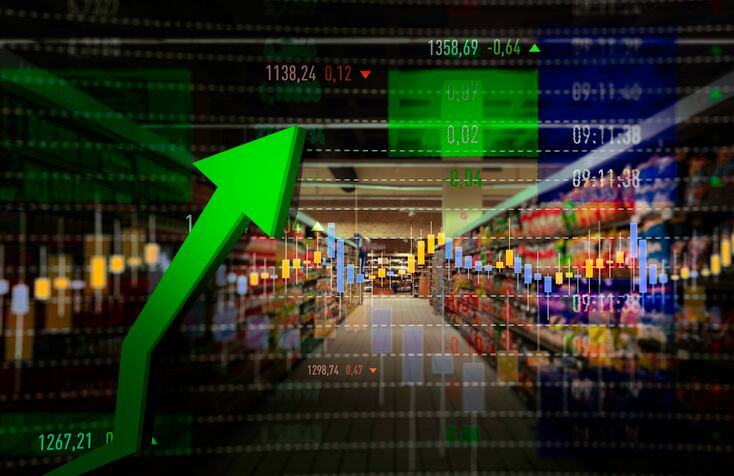The back half of the year also will mark a full year since inflation began its dramatic climb, making for better year-over-year comparables just as ingredient costs “hopefully” come down and some of the challenges that have plagued the overall industry return to normal, company executives told investors during yesterday’s second quarter earnings call.
This echoes messaging delivered earlier this year from Mondelez and McCormick.
A $3m miss due to unforeseen costs
Like other players in the CPG food and beverage space, Hain Celestial was hit hard in the first half of the year by inflation, labor and supply chain challenges and “some incremental unforeseen costs, which led to about a $3m miss in our original adjusted EBITDA guidance,” resulting in a 5% drop in its adjusted EBITDA growth in Q2 over the same time last year and a 9% drop in the first half of the year over the prior year.
As a result, even though the business saw top line performance in line with the high end of its original guidance with net sales in the US up 3.7% over last year and 9.7% on a two-year stack and overall adjusted net sales up 7% on a two-year stack, it had to lower its adjusted EBITDA growth, CEO Mark Schiller said.
He explained that in the second quarter adjusted EBITDA sales growth fell 5% and 9% for the first half of the year over the same periods last year. Based on this, he said he now expects adjusted EBITDA to come in approximately flat for the year versus previously expected mid- to high-single digit growth.
Schiller attributed the “small miss” to two unexpected challenges “both of which happened in the back half of the quarter, giving us limited time to respond.”
The first was a significant energy cost increase in Europe, where prices in the quarter accelerated as much as 10 times what they were last year, and the emergence of the Omicron variant, which created additional global labor challenges throughout the supply chain, impacting both service and costs, Schiller said.
In both cases, he said the company is hopeful the worse is behind them as it has locked in an energy contract for the balance of the fiscal year, and the impact from Omicron “appears to be peaking,” which should bring some relief in the back half.
During the quarter, Hain Celestial also experienced higher-than-planned inflation and continued industry wide distribution and warehousing cost pressures, related in part to labor challenges, but also freight carrier availability and additional costs incurred “to prioritize customer service,” out-going CFO Javier Idrovo said.
Hopeful but practical – Hain plans for $40-$50m in additional out-of-plan costs
Despite these setbacks, Schiller reassured investors that he is confident Hain will hit its new guidance target even though it assumes a significant ramp up in the back half of the year.
“We have been, obviously, on this journey for quite some time,” but, he said, “we have productivity that’s coming to fruition in the second half, we have volume acceleration that we are expecting in the second half that will drive some of that EBITDA, [and] we have more pricing coming in the second half that will also improve the margins because, again, the inflation is hitting before the pricing catches up.”
Idrovo added that the company also has “quite strong visibility” of about 90% “to our cost of goods going forward for the second half. … So, we feel pretty good about the cost forces that we have embedded in the second half as well.”
That said, the company is also planning for about $40m to $50m of additional out-of-plan costs this year related to supply disruptions, including finding backup sources of supply and transportation on short notice, and bracing for potential prolonged out of stocks and material shortages and production disruptions, Schiller said.
In terms of current and future supply challenges, Schiller called out a shortage of pouches that is impacting its baby food business and difficulty sourcing some inbound ingredients.
“So, even though our hope is that things will kind of stabilize, we are aggressively automating our plants, trying to take out the need to fill all these job openings, because, again, it’s good for the cost, and it is also alleviates some of the labor disruptions. We’re increasing our inventory levels on things where we’ve had issues with regards to service and supply. So, we are doing things to try and mitigate and protect ourselves from further disruptions, but its hard to predict disruptions that go on in somebody else’s factory or in terms of crops,” he said.
More pricing on the way
One element that is within Hain’s control that will significantly impact its back half performance is pricing, for which Schiller noted the company currently is negotiating additional increases with some customers.
In the most recent quarter, pricing at shelf went up about 7%, and with the second round of pricing slated for later this year, that should increase to about 10% at retail, Schiller said.
He acknowledged that some retailers have pushed back on pricing, causing some distribution losses in a couple of categories, but that for the most part, he said, retailers understand the impact of inflation.
“There’s general recognition that pricing needs to happen. It’s just a question of what’s the give for that get that we continue to negotiate. But, I do expect pricing will all get in before the end of the day,” he said.
Of course, price increases are not the company’s only option for managing inflation. Schiler noted that Hain also is looking at pack architecture and other ways to lower costs with out raising prices.




